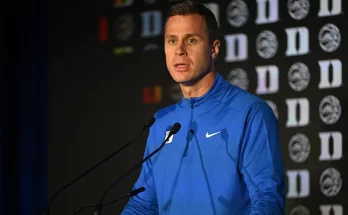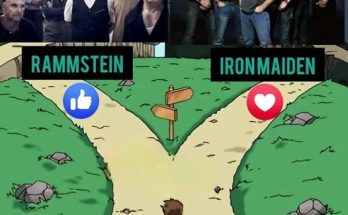Brent Venables arrived at Oklahoma with an impressive reputation, one forged over years of defensive mastery at Clemson, where he was considered one of the best defensive coordinators in college football. His arrival was heralded as a significant boon for the Sooners, a program historically known more for offensive prowess than defensive dominance. The hope was that Venables would bring an elite defensive culture and lure top-tier defensive recruits, balancing the Sooners’ identity and elevating the team into a new era of competitiveness on both sides of the ball. Yet, despite Venables’ credentials and the prestige of the Oklahoma program, the Sooners have repeatedly lost elite defensive recruits to other programs that many fans and analysts would consider less prestigious or simply “inferior” by traditional standards. This trend has been a source of frustration and concern, prompting questions about what factors might be contributing to these losses and what it means for Oklahoma’s future.
At first glance, Oklahoma is a storied football program with a rich history and a strong tradition of success. It competes in the Big 12, a Power Five conference, and has produced some of college football’s most legendary players and coaches. It’s a program that offers exposure, a passionate fan base, excellent facilities, and a track record of developing NFL talent. Brent Venables, with his reputation as a defensive genius, should, in theory, be an enormous draw for defensive recruits looking to excel at the next level. So why do so many highly sought-after defensive prospects choose other schools, often perceived as lesser programs or from less heralded conferences?
One key factor to consider is the evolving landscape of college football recruiting itself. Recruiting today is no longer just about the program’s history or the coach’s reputation. It’s about relationships, timing, player development promises, playing time, scheme fit, and increasingly, the entire cultural and social environment of the program and its location. For elite defensive recruits, the decision process is often complicated by their desire for immediate impact, development under coaches who understand their skill sets, and the ability to maximize their path to the NFL. Some programs that aren’t traditional blue bloods have aggressively built their recruiting pipelines, focused on creating personalized relationships, and invested in innovative defensive schemes that better showcase their defensive talent. These factors can outweigh Oklahoma’s historical prestige.
In addition, the Big 12 conference’s offensive explosion in recent years has arguably affected the perception of defensive play in the conference. Oklahoma, like many Big 12 teams, has often been associated with high-powered offenses rather than defensive dominance. For defensive recruits who want to play against the best competition and in a system that highlights their strengths, programs in other conferences or with a more defense-first identity can appear more appealing. The Southeastern Conference (SEC), for example, has been a magnet for elite defensive talent due to its combination of top-tier competition, defensive coaching pedigree, and the NFL’s scouting focus on the conference. Programs such as Georgia, Alabama, LSU, and others have established themselves as defensive powerhouses, which can create a perception that the best defensive players need to be in those environments to succeed.
Another important consideration is the timing of the coaching transition and the ongoing adjustments that Venables and the Oklahoma staff have had to make. Coaching changes inherently create uncertainty among recruits. The initial momentum Venables brought to the program might have been hampered by instability or growing pains as new defensive schemes and cultures are implemented. Some recruits may have committed early under prior regimes or sought more immediate playing opportunities elsewhere, especially if Oklahoma’s defense was struggling to gel on the field. Losing elite defensive recruits is often not just about losing them to “inferior” programs but also about how those programs capitalize on timing, momentum, and personal relationships in the recruiting process.
The impact of losing these elite recruits extends beyond the immediate roster. Recruiting battles are also symbolic of broader trends within college football. When a program like Oklahoma consistently loses out on defensive talent, it signals to fans, analysts, and other recruits that the program might be struggling to establish a credible defensive identity. This can have a compounding effect, where the perception of losing leads to actual losses, as future recruits choose programs with stronger defensive track records. It can also affect team morale and performance, especially if the defense is repeatedly outmatched in games due to a talent gap. Venables’ challenge is not only to win on the field but also to win the recruiting battles that ultimately fill the roster with players capable of executing his vision.
Some might argue that losing elite defensive recruits to “inferior” programs is not as detrimental as it seems, because football is a game of development and scheme. There are countless examples of programs that turned three-star recruits into NFL stars through excellent coaching and development. Venables is known for his ability to maximize player potential, so it’s possible he can compensate for recruiting misses by developing the talent he does land. However, elite talent is always the foundation of sustained success. While development is critical, having a roster rich with five-star and four-star defensive recruits gives a program the depth, speed, and physicality needed to compete at the highest levels consistently. When Oklahoma consistently fails to land these top recruits, it puts them at a recruiting and competitive disadvantage, particularly against SEC teams that regularly stockpile elite defensive players.
Examining some specific examples of recruits who chose other programs helps illustrate this phenomenon. Several high-profile defensive prospects who were heavily pursued by Oklahoma ultimately committed elsewhere. Whether it was a star linebacker choosing an SEC school like LSU or Alabama, or a top defensive back opting for a Pac-12 program perceived as less prestigious, these choices reflect the complex calculus recruits make. Often, these decisions hinge on factors like scheme fit, coaching relationships, opportunity for early playing time, and even family preferences or geographic proximity. It is rarely just about program prestige alone. For Oklahoma, losing these recruits to what fans call “inferior” programs can feel like a missed opportunity, especially when those players go on to have standout college careers or early NFL success.
Financial resources and facilities also play a role in recruiting battles. While Oklahoma has invested heavily in facilities and support infrastructure, programs across the country have poured massive sums into building state-of-the-art training centers, academic support, nutrition, and wellness programs tailored to athlete development. Recruits notice these investments and weigh them heavily in their decisions. Furthermore, NIL (Name, Image, Likeness) opportunities have become a new factor in recruiting. While major programs have generally offered lucrative NIL packages, some smaller or less traditionally elite programs have creatively leveraged local markets, boosters, and social media to attract recruits with unique NIL opportunities. This dynamic can even the playing field or shift it in unexpected ways.
The cultural and social environment of the program also influences recruits. College athletes today are more aware and deliberate about their personal well-being, support systems, and overall happiness. The climate of the coaching staff, team chemistry, university environment, and community engagement can be deciding factors. Some recruits might see Oklahoma as a place with high expectations but also intense pressure and competition, while other programs might offer a more comfortable or supportive environment. These nuances in player experience can translate into recruiting outcomes.
What does all this mean for Brent Venables and the Oklahoma Sooners going forward? The pattern of losing elite defensive recruits to programs perceived as “inferior” is a challenge that demands strategic reflection and adaptation. Venables must continue to build trust and relationships with recruits early and decisively, communicating a clear vision for defensive success at Oklahoma. The Sooners’ staff must emphasize player development, scheme flexibility, and a culture that appeals to modern recruits’ values. Increasing collaboration with local and regional pipelines can help secure talent before other programs intervene. Moreover, Oklahoma may need to highlight its unique strengths: a history of success, exposure to NFL scouts, and the chance to be part of a defensive transformation under one of the game’s best minds.
Ultimately, recruiting battles are cyclical and dynamic. No program is immune to losing recruits or facing setbacks. What matters most is how a program responds and whether it can turn losses into lessons that strengthen its future. Brent Venables and the Sooners have the foundation and resources to do just that, but it will require persistence, creativity, and an unwavering commitment to building a defense that lives up to the program’s storied legacy. If they succeed, Oklahoma can reclaim its place not only as an offensive juggernaut but also as a defensive powerhouse, attracting the elite defensive recruits that have so far slipped through their fingers.
In the competitive world of college football recruiting, no program can rest on its laurels. The phenomenon of losing elite defensive recruits to programs deemed “inferior” is not just a failure of prestige but a symptom of the changing nature of the game, where relationships, development, culture, and timing reign supreme. Brent Venables and the Oklahoma Sooners must evolve alongside these changes, turning perceived setbacks into future victories. With the right approach, the Sooners’ defense can become the envy of the conference and the nation, attracting top talent and competing at the highest level once again.



